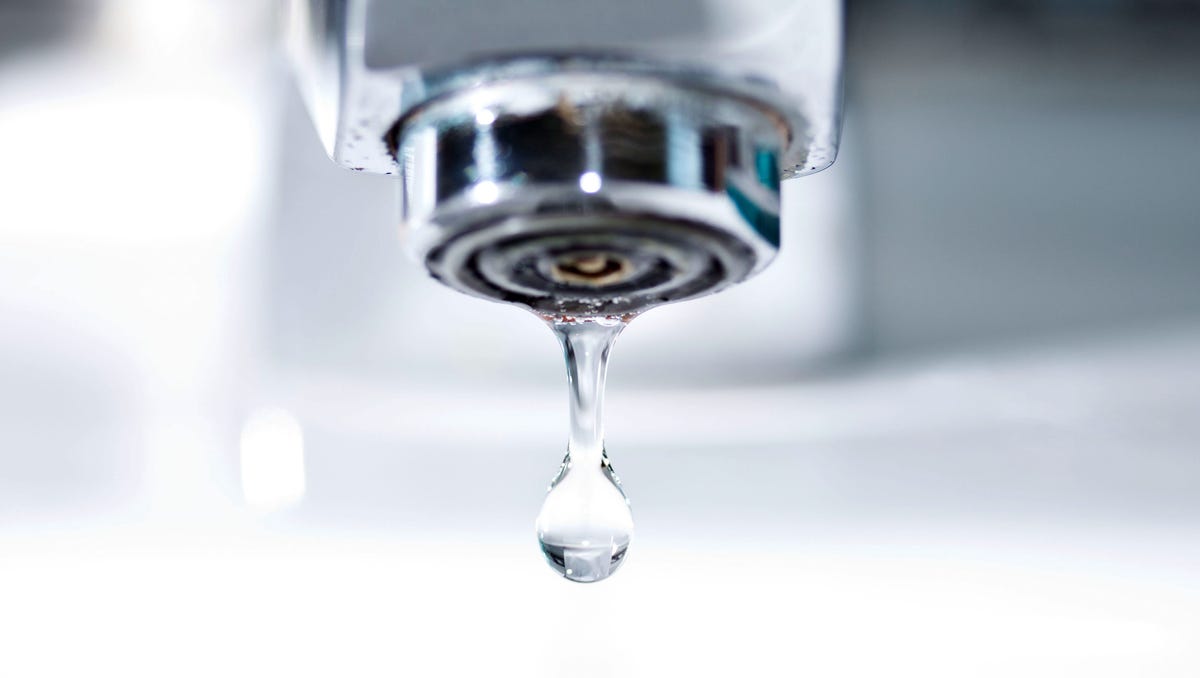Alaska
Alaska's pristine rivers are turning a rusty orange even when seen from space, likely because of melting permafrost: study
At least 75 of Alaska’s brooks and streams have been turning a dirty orange likely due to thawing permafrost, with some rivers so impacted that the discoloration can be seen via satellite, a new study says.
This phenomenon, which researchers say comes amid unusually rapid warming in the region, was first observed in the northwestern state in 2018, scientists told Business Insider’s Jenny McGrath in January.
The researchers have been stumped by it for years. But their findings, published Monday in the peer-reviewed Communications Earth & Environment journal, say that the waterways’ rusty color likely comes from minerals uncovered by the thaw.
Previously locked beneath Alaska’s permafrost, these minerals are now exposed to water and oxygen, causing them to release acid and metals like zinc, copper, iron, and aluminum, the study said.
The dissolved iron is thought to be the main culprit behind the “rusting” of the rivers, which typically occurs in July and August when the thaw is the most pronounced.
But the implications of the melt go far beyond color. These waters are becoming so acidic that some are registering pH levels of 2.6, or between the equivalent of the acidity of lemon juice and orange juice.
Pure water has a pH value of 7. Rivers and lakes typically have a pH value of 6.5 to 8, and acid rain has a pH value of 4.2 to 4.4.
Jon O’Donnell/National Park Service
“These findings have considerable implications for drinking water supplies and subsistence fisheries in rural Alaska,” researchers wrote.
They added that the region has already suffered the “complete loss” of two fish species due to the acidity: juvenile Dolly Varden trout and the Slimy Sculpin. Chum salmon and whitefish are also at risk of population decline, they said.
The changes could be devastating for indigenous tribes in the region, which rely heavily on fishing, researchers noted.
The 75 orange streams observed were scattered across northern Alaska over a span of about 600 miles, the study said. All of them were in remote areas, miles away from human activity that could impact land, such as roads or mining.
Researchers highlighted satellite images of the Agashashok River, a tributary of the Kuguroruk River, and the Anaktok Creek tributary of the Salmon River in northwest Alaska. They said all three have turned considerably redder in the summer months of the last 10 years.
Joshua Koch, US Geological Survey
Scientists warn that Alaska is warming at a rate two to three times the global average.
The Biden administration projected in November that the state would need an estimated $4.8 billion in infrastructure repair and adaptation over the next 50 years due to rising temperatures and damage from flooding, erosion, and permafrost thaw.
According to the administration’s multiagency report, Alaska’s fishing and tourism industries, which collectively provide more than 90,000 jobs and $2.57 billion in wages, are also at risk, with fish stocks expected to collapse and winter tourism likely falling.

Alaska
Gardening Tips: Successfully cultivating red rhubarb in Alaska

FAIRBANKS, Alaska (KTVF) – Among the wide world of vegetables, a popular one to grow in the Alaskan Interior is rhubarb.
Glen Risse, Co-Owner of Risse Greenhouse, said, “Rhubarb is something we enjoy growing, and our customers can’t get enough of. We grow a variety called the Canadian Red, which gives you red stalks and makes your pies much prettier than the green stalks.”
These particular rhubarbs are grown using a technique called separation. “They develop plants underground, and we separate them and put them in pots, and over time, they develop much larger plants,” said Risse.
Separation can be done using a shovel, as long as some of the main stalk is in each half. “We’re going to cut this plant right in half. So, attached to the bottom of this plant are these big, long, brown, underground stems, and what you can do… if you just remove some of the larger leaves so the plant isn’t trying to support a bunch up top, this is a great start right here. You put that in the ground, and it will grow.”
While rhubarbs can be planted year round, spring is the best season to separate them.
Risse noted that the leaves on rhubarb are poisonous. “It also is a high consumer of a minor element called molybdenum, so if you can, what’s best is to take your leaves and tear them up and put them back around the base of your plants. This will ensure that you have the molybdenum you need for your plants to grow healthy.”
When picking rhubarb, Risse recommends going all the way down to the bottom of the stalk for a clean grab. “You don’t want to snap it off in the middle, because that will give you a place where the plant could rot.”
Seed pots, meanwhile, can be torn out from the bottom as well and reintroduced into the soil.
While the color of the rhubarb doesn’t affect its flavor, many prefer a red tint for aesthetic reasons when making rhubarb pie. “If your rhubarb isn’t as red as you like, you can take and get a little bit of some ash out of your wood stove and sprinkle it around the base of your plant. That potash will change the PH and your rhubarb will turn red,” Risse advised.
He added, however, that too much ash can kill the plant.
Risse recommends planting individual rhubarb plants about three feet apart, and cutting rhubarb about an inch away from the leaf.
Copyright 2024 KTVF. All rights reserved.
Alaska
Alaska implements limits on cruise ship passengers after record footfall
)
While many businesses benefit from tourist spending, residents are increasingly troubled by noisy helicopters, congested streets and trails, and environmental damage. To address these issues, Juneau has struck a deal with the Cruise Lines International Association in Alaska. The agreement sets daily limits of 16,000 passengers from Sundays to Fridays, and 12,000 on Saturdays
read more
Alaska’s capital city Juneau located on the Gastineau Channel, is taking action to manage the influx of cruise ship tourists, amid rising worries about the impact on local life.
This came also after city saw a record 1.65 million cruise passengers last year, marking a 23% increase from previous highs.
While many businesses benefit from tourist spending, residents are increasingly troubled by noisy helicopters, congested streets and trails, and environmental damage. To address these issues, Juneau has struck a deal with the Cruise Lines International Association in Alaska. The agreement sets daily limits of 16,000 passengers from Sundays to Fridays, and 12,000 on Saturdays.
Alexandra Pierce, Juneau’s tourism manager, highlighted city’s stance on managing growth within its current infrastructure limitations. She highlighted the importance of balancing economic benefits with residents’ concerns and preserving local livelihoods.
Despite this effort, longtime critic of the cruise industry, Karla Hart, remains skeptical. She fears that even with the agreed limits, the city could still see record-breaking arrivals during the 22-week cruise season. Hart is advocating for a local referendum proposing “ship-free Saturdays” to protect community quality of life.
The global cruise industry, rebounding strongly post-pandemic, continues to grow with increasingly large ships. For instance, the Icon of the Seas, launched in January, accommodates over 7,000 passengers and boasts the world’s largest onboard waterpark.
Juneau’s concerns echo those of other cities worldwide grappling with social and environmental impacts from cruise tourism. Venice has banned large cruise ships from its lagoon, while Barcelona and Amsterdam have implemented restrictions and taxes to mitigate these effects.
Hart highlighted ongoing concerns about emissions, ship strikes, and climate change attributed to cruise ship and urged further measures to safeguard Juneau’s environment and community well-being.
Alaska
YMCA of Alaska and Alyeska Ski Resort break down new development plans

The Supreme Court on Friday struck down a Trump-era ban on bump stocks, the rapid-fire gun accessory used in the 2017 Las Vegas mass shooting that killed 60 people — including the gunman — and wounded more than 400. Alaskans reacted to the ruling Friday, many expressing mixed reactions.
-

 News1 week ago
News1 week agoWoman handcuffed in police car hit by freight train reaches $8.5M settlement
-

 News1 week ago
News1 week agoIsrael used a U.S.-made bomb in a deadly U.N. school strike in Gaza
-

 World1 week ago
World1 week agoEconomy, migration: Voters' main concerns ahead of elections
-

 Politics1 week ago
Politics1 week agoTrump campaign accelerates vetting of potential running mates
-

 Movie Reviews1 week ago
Movie Reviews1 week agoShort Film Review: Blue and White (2022) by Hiroyuki Nishiyama
-

 World1 week ago
World1 week agoWorld leaders, veterans mark D-Day’s 80th anniversary in France
-

 World1 week ago
World1 week agoFrance to provide Ukraine with its Mirage combat aircraft
-

 World1 week ago
World1 week agoRussia-Ukraine war: List of key events, day 833


















